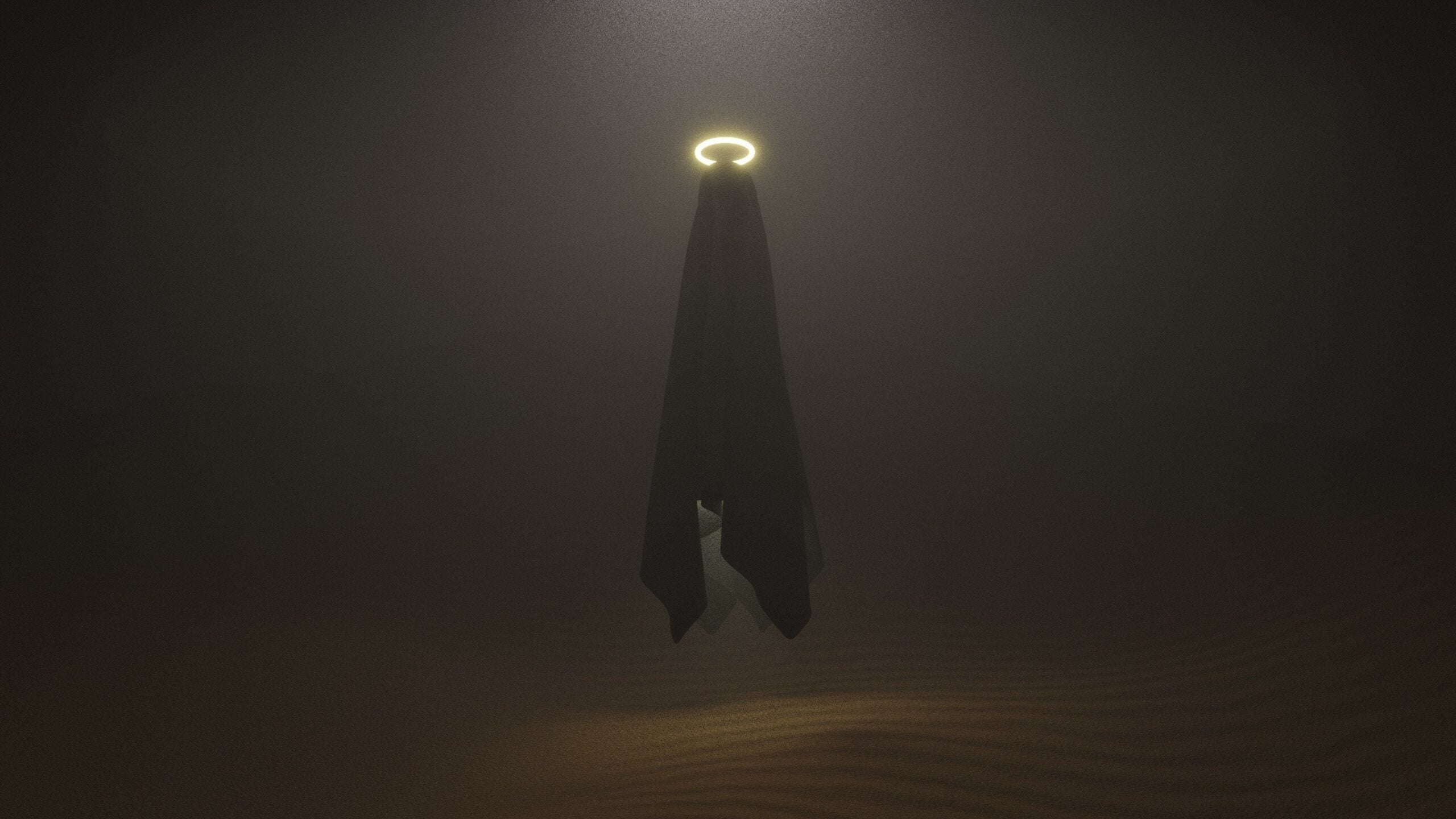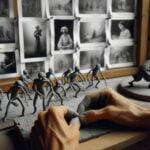Are you ready to dive into the captivating world of animation? Get ready to be amazed as we unveil some surprising fun facts about the animation industry! From the mesmerizing art of traditional 2D animation to the mind-blowing CGI techniques, there’s so much to explore and discover. As an enthusiastic and knowledgeable animation enthusiast, I will be your guide in uncovering the lesser-known aspects of this fascinating industry. So sit back, relax, and prepare to be entertained and enlightened with intriguing fun facts about the animation industry!

Animation Industry Fun Facts
Are you a fan of animated films and curious about the fascinating world behind them? Get ready to uncover some surprising fun facts about the animation industry! From the birth of animation to the latest CGI techniques, there’s so much to discover. Let’s dive right in and explore these intriguing tidbits that will leave you amazed and entertained.
- Ariel from The Little Mermaid had a real-life counterpart. Did you know that the inspiration for Ariel, the lovable and adventurous mermaid princess, actually came from a real person? Glen Keane, the supervising animator for Ariel, based her appearance and movements on his teenage daughter. Talk about bringing a character to life!
“By incorporating his own daughter’s features and mannerisms into Ariel, Glen Keane added a touch of realism and authenticity to this beloved character.”
- Mickey Mouse is considered a knock-off. While Mickey Mouse is undeniably one of the most iconic animated characters of all time, he was actually created as a replacement for another character. Walt Disney’s original creation, Oswald the Lucky Rabbit, was taken from him by his distributor. Determined to bounce back, Disney and his team brainstormed and came up with the charming mouse we know today as Mickey.
“In a twist of fate, Walt Disney’s loss of Oswald the Lucky Rabbit led to the creation of the beloved Mickey Mouse, who would go on to become the face of Disney.”
- A zoetrope can simulate animation before your eyes. Before the emergence of film, animators used a fascinating device called a zoetrope to create the illusion of motion. This spinning cylinder with slits and sequential images allows viewers to see a primitive form of animation simply by looking inside.
“Imagine being able to witness the magic of animation with just a spin of a device. The zoetrope provided an early glimpse into the captivating world of animated motion pictures.”
- Animators on How To Train Your Dragon had to attend flight school. Creating animated films often requires thorough research and attention to detail. For the animated masterpiece “How To Train Your Dragon,” animators attended flight school to learn about the physics and mechanics of flying. This dedication to authenticity is what makes the dragons in the film so believable and awe-inspiring.
“By immersing themselves in the world of aviation, animators gained valuable insights that allowed them to bring the breathtaking flight sequences in ‘How To Train Your Dragon’ to life.”
- The majority of claymation characters have skeletons. Claymation, a stop-motion animation technique using clay figures, may seem flexible and squishy, but underneath their malleable exterior, most characters have an armature or skeleton. This internal structure provides stability and allows animators to achieve realistic movements.
“Claymation characters have more than meets the eye! The inclusion of skeletons gives these otherwise pliable clay figures the stability they need to perform intricate movements and emote.”
These fun facts provide just a glimpse into the fascinating world of animation. From the early pioneers to the latest technological advancements, the animation industry continues to captivate audiences worldwide. Stay tuned as we uncover more surprising tidbits in the next section!
[Table Markdown Format]
| Fact | Description |
|---|---|
| 1. Ariel’s real-life counterpart | Glen Keane, the animator for Ariel in The Little Mermaid, based her appearance on his teenage daughter. |
| 2. Mickey Mouse’s origins | Mickey Mouse was created as a replacement for Oswald the Lucky Rabbit, which had been taken from Walt Disney by his distributor. |
| 3. The zoetrope | The zoetrope, a spinning cylinder with sequential images, predates film and can simulate animation when spun. |
| 4. Flight school for How To Train Your Dragon | The animators of How To Train Your Dragon attended flight school to learn about aviation and create realistic flight sequences. |
| 5. Skeletons in claymation characters | Most claymation characters have an internal skeleton or armature to achieve stability and realistic movements. |
The animation industry is filled with fascinating and fun facts that will leave you amazed. Want to discover some of these mind-blowing tidbits? Click here to uncover a treasure trove of fun facts about the animation industry. From the origins of animation to the latest technological advancements, this captivating collection will keep you entertained for hours. Prepare to be dazzled and dive into the world of animation wonders with this exciting link: fun facts about the animation industry.
FAQ
Question: Did Ariel from The Little Mermaid have a real-life counterpart?
Answer: Yes, Ariel from The Little Mermaid was based on a real-life person named Sherri Stoner, who served as the live-action reference model for the character.
Question: Is it true that Mickey Mouse is considered a knock-off?
Answer: While Mickey Mouse may have similarities to a character named Oswald the Lucky Rabbit, created by Universal Studios, Mickey Mouse is not a knock-off. Walt Disney’s creation of Mickey Mouse was a significant milestone in the animation industry.
Question: Can a zoetrope simulate animation before your eyes?
Answer: Yes, a zoetrope is a device that can create the illusion of motion by spinning a sequence of images rapidly. When viewed through slits in the device, the images appear to come to life, simulating animation before your eyes.
Question: Did animators on How To Train Your Dragon have to attend flight school?
Answer: Yes, the animators working on How To Train Your Dragon underwent training at flight schools to study the movements and behavior of flying creatures. This research helped bring the dragons in the film to life with realistic flight patterns and behaviors.
Question: Do the majority of claymation characters have skeletons?
Answer: Yes, most claymation characters are built around a skeleton-like armature. This internal structure helps provide stability and allows animators to manipulate the characters’ movements during the stop-motion animation process.
Question: Who is considered the father of animation?
Answer: Georges Méliès, a pioneering French filmmaker, is often regarded as the father of animation. His groundbreaking film “A Trip to the Moon” (1902) showcased innovative animation techniques and set the foundation for the future of animation.
Question: When was the first animated movie released?
Answer: The first animated movie, “The Adventures of Prince Achmed,” was released in 1926. Directed by Lotte Reiniger, the film utilized silhouette animation, a technique in which cut-paper characters are manipulated frame by frame.
Question: Are animated cartoons always different?
Answer: Yes, animated cartoons are always different as they offer unique stories, characters, and animation techniques. Each animated cartoon serves as an individual creation, bringing distinct experiences and narratives to viewers.
Question: What is the lamp in the Pixar opening called?
Answer: The lamp in the Pixar opening is called Luxo Junior. It is a iconic animated lamp that has become synonymous with Pixar’s animated feature films.
Question: What does animation translate from French as?
Answer: Animation translates from French as “soul.” This translation reflects the intricate and soulful nature of the creative process involved in bringing animation to life.
Question: To whom did Walt Disney initially present his idea?
Answer: Walt Disney initially presented his idea to Louis B. Mayer, the head of Metro-Goldwyn-Mayer (MGM). However, Mayer did not show interest in Disney’s concept, leading him to establish his own studio and create animated classics independently.
Question: Did Walt Disney receive an Oscar for Snow White and the Seven Dwarfs?
Answer: Yes, Walt Disney received an honorary Oscar in 1939 for the creation of Snow White and the Seven Dwarfs. The film was recognized for its groundbreaking achievement in animated storytelling.
Question: Was Toy Story the first fully modeled and created 3D feature-length film?
Answer: Yes, Toy Story, released in 1995, was the first fully modeled and created 3D feature-length film. It marked a significant milestone in the animation industry, revolutionizing the way animated films were made and appreciated.
Question: Are animation styles constantly evolving and increasing?
Answer: Yes, animation styles are constantly evolving and expanding. With advancements in technology and the emergence of new techniques, animators continue to push the boundaries of creativity and explore different artistic styles.
Question: Do animators do in-depth research for their work?
Answer: Yes, animators conduct in-depth research for their work. Whether it involves studying real-life movements, historical contexts, or specific subject matters, research is crucial for creating believable and engaging animated content.
Question: Have animated films won numerous Academy Awards?
Answer: Yes, animated films have won numerous Academy Awards over the years. Some notable winners include Spirited Away, Up, Finding Nemo, and The Lion King, showcasing the recognition and acclaim that animated films receive from the film industry.
Question: How many companies have contributed to animation history?
Answer: Many companies have contributed to animation history, each adding their unique innovations and contributions. Some prominent companies include Walt Disney Animation Studios, Pixar Animation Studios, DreamWorks Animation, Studio Ghibli, and Warner Bros. Animation, among others.
Question: Are there abundant job opportunities in the animation industry?
Answer: Yes, the animation industry offers abundant job opportunities across various roles, such as animators, character designers, storyboard artists, producers, and more. The industry’s growth and demand for skilled professionals make it an attractive field for aspiring artists and storytellers.
Question: Was the first commercial film with stereophonic sound Fantasia?
Answer: Yes, Fantasia, released in 1940, was the first commercial film to feature stereophonic sound. The film utilized an innovative sound system called Fantasound, providing an immersive audio experience to complement the stunning visuals.
Question: How many Oscars did Walt Disney receive for Snow White?
Answer: Walt Disney received eight Oscars for Snow White and the Seven Dwarfs at the 1939 Academy Awards. This recognition highlighted the groundbreaking achievements and impact of the film on the animation industry.
- Discover Coolspring Township, PA: A Blend of Rural Charm and Modern Living - November 22, 2024
- Discover Clinton, MI (Lenawee County): A Charming Village in the Heart of the Irish Hills - November 22, 2024
- Cohocton, Steuben County, New York: A Village Charm in the Finger Lakes Region - November 22, 2024
















